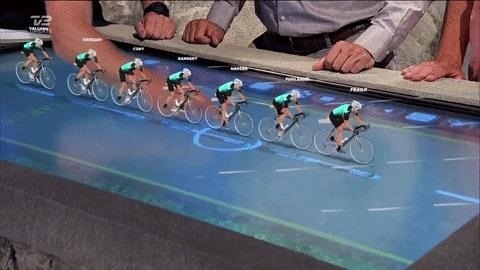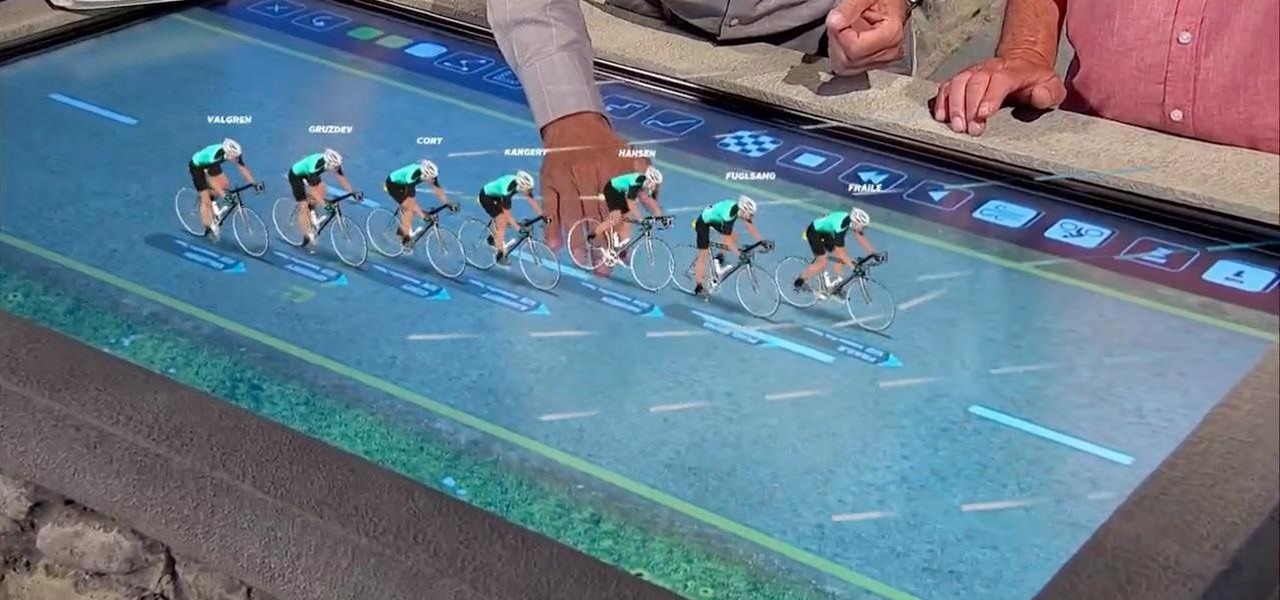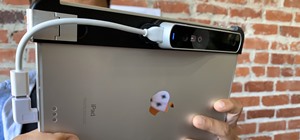The Super Bowl of bicycle racing, the Tour de France, added augmented reality to its TV broadcast this year.
Denmark's TV 2 built a new studio for the broadcast where on-air personalities where able to stand in front of virtual backgrounds and behind a large touchscreen tabletop that displays 3D content to assist in their analysis of the race.

"We did not use virtual sets in last year's studio," said Klaus Bøgeholdt, production manager at TV 2 Sport in a recent blog post. "Instead, we used a large round horizon with the print of an Alpine landscape. This year we have chosen to generate the whole background as virtual graphics (blue screen)."
TV 2 used 3D graphics software from Vizrt to generate the virtual content. The Viz Engine platform rendered the virtual backgrounds of the studio, the AR content, and the touchscreen board, while Viz Pilot enabled the production team to create 3D content via templates designed for journalists.

"Working with virtual graphics is quite new to us. For several years we have been working with AR graphics. But creating a virtual background that is associated with our physical elements in the studio has been a fun challenge," said Bøgeholdt.
"I think virtual graphics can do something very special when you use it with physical scenography. When the two elements play together (physical scenography and virtual graphics), it's sometimes hard to tell what is physical and what is virtual on the set. I think we have hit something unique this year, using the best of the two worlds."

The network first deployed the technology for its recent coverage of the World Cup. In addition to the Tour de France, the network broadcasts the Vuelta a España race in Spain, for which they will be able to set up a similar production.
"The primary reason for this is because this year our main TV 2 studio needed to be flexible enough to accommodate the scenography of both the World Cup in football and the Tour de France," said Bøgeholdt. "I immediately saw how valuable it was for our on-air experts to have a AR tool they could use to easily show what they were saying and for viewers to not only hear but also see what the expert meant. I thought it could be fun to modify it for cycling."
In recent months, publishers like The New York Times and Time have leveraged AR to enhance their online reporting and print publications in order to increase readership.
Similarly, TV productions are now turning to the technology to liven up their live broadcasts and combat cord-cutting. We've already seen similar implementations by The Weather Channel and TNT's NBA coverage, and we can expect it to become much more commonplace as the technology becomes more accessible for production teams.
Just updated your iPhone? You'll find new features for Podcasts, News, Books, and TV, as well as important security improvements and fresh wallpapers. Find out what's new and changed on your iPhone with the iOS 17.5 update.























Be the First to Comment
Share Your Thoughts